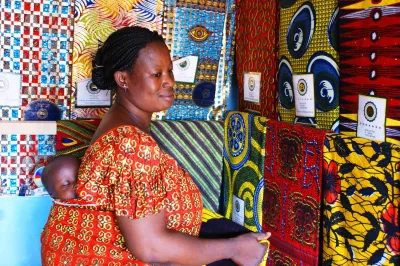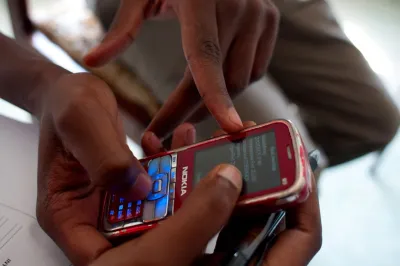Debt Moratoria in the Next Pandemic: Be Prepared, and Be Fair
Imagine it is 2025 and that, unfortunately, another pandemic is sweeping the world. Much like in the 2020 crisis, borrowers have seen their livelihoods upended and are struggling to repay loans. One of the questions before policy makers amid this new crisis is whether to extend moratoria to distressed borrowers. In search of answers, they reflect on the world’s experience with the COVID-19 pandemic and whether moratoria were part of the solution. These policy makers conclude that they did some things right in 2020.

Just days into COVID-19 lockdowns, bank regulators in more than 115 countries granted special permission for financial services providers (FSPs) to extend moratoria to millions of borrowers, especially those with small business and consumer loans. These moratoria were the next best thing to cash in the wallet for borrowers who had lost their jobs or seen their business revenue plummet. For lower-income countries, whose governments could ill afford welfare payments, moratoria became an important form of economic relief. And by relaxing provisioning on paused loans, these special moratoria also shored up FSPs’ balance sheets and prevented panic in financial systems. Through the moratoria, the world’s economies put the shock-absorbing capacity of financial systems to good use.
But these policy makers also see that moratoria could have worked better in some respects. So, in 2025, as the world once again turns to moratoria, they are determined to learn the lessons of the past and make moratoria work even better. What do they do differently?
Fair burden sharing
As public health authorities shutter the economy to stop the new pandemic, advocates for lower-income people are already calling on policy makers to spread the economic burden among those better able to bear it. Policy makers know that moratoria on small loans (as well as evictions and mortgages) will shift some economic pain from lower-income families and small businesses onto banks and landlords — at least, temporarily. But they recall that, in 2020, FSPs shifted the pain back to small borrowers by allowing interest to accrue and compound during moratoria. Ultimately, borrowers paid to pause their loans – often dearly.
Back in 2020, policy makers debated whether to shift some of the long-term burden of accrued and compounding interest away from borrowers, but it was difficult for them to find a workable solution. In India, after much debate in the Supreme Court over who should pay this additional interest, the government found a remedy when it agreed to pay banks the compounding portion of borrowers’ interest incurred during moratoria. Implicitly, this decision made moratoria part of the government’s overall pandemic response while affirming the right of the banks to charge fully for delayed payments.
Fortunately, in 2025, several governments have included special provisions in their catastrophe protocols that pledge government funding for a portion of the interest that small loans accrue during moratoria. This pledge helps to ensure policies intended to help low-income people don’t end up harming them. It has the added benefit of providing banks with a small amount of liquidity during the moratoria period.
Moratoria will also be fairer this time around because policy makers have universally agreed that borrowers should have the right to choose whether to accept or reject a moratorium offer. This was not always the case in 2020. In some countries, regulators — anxious to prevent panic — and FSPs — wishing to avoid tedious case-by-case administration — promulgated blanket moratoria, even before obtaining agreement from borrowers. However, some borrowers preferred to keep paying to avoid extra interest charges. In response to pushback from borrowers on unilateral moratoria, authorities in Peru affirmed consumers’ right to unwind unwanted moratoria. Today, following this example, regulators the world over require FSPs to notify borrowers of moratoria offers and present them with the option to refuse.
Policy makers have also anticipated the challenge of maintaining borrowers’ standing with credit bureaus. When borrowers accept moratoria during a national emergency, it should not hurt their creditworthiness. In 2020, there was confusion over how banks should report restructured loans to credit bureaus, how credit bureaus were to incorporate these loans into credit scores, and how new lenders were to use the information. In India, FSPs simply didn’t report many loans for several months. Eventually, those problems were sorted out. Now, in 2025, credit bureaus follow well-understood protocols for handling loans in moratoria during emergencies.
Preparedness
The emergency protocols that the world’s banking authorities and FSPs put in place after the COVID-19 pandemic also address operational continuity and communications.
Back in 2020, economic lockdowns prevented in-person interactions between lenders and borrowers and often led to breakdowns in communication. In Uganda, loan officers could not meet with customers in the field, and transport restrictions prevented adequate staffing of branches and even call centers. FSPs transacting mainly in cash were caught especially flat-footed.
Thankfully, this problem is behind us now. The pandemic accelerated FSPs’ digitization plans across the world, and record numbers of borrowers started using mobile technology. FSPs serving lower-income customers now routinely communicate and transact digitally. They have also upgraded their internal systems to handle the irregular schedules of loans in moratoria. And the expansion of digital infrastructure during and after COVID-19 now allows staff to work from home.
Consumer protection
As financial regulators and supervisors prepare for the new moratoria in 2025, they are better equipped to mitigate some of the consumer risks that appeared in 2020. They now use market monitoring tools, such as suptech, consumer phone surveys and mystery shopping, to assess consumer risks in real time. They can quickly spot issues such as abusive collections practices.
Nevertheless, both financial authorities and FSPs have learned from the previous crisis that ensuring good communication and transparency will be challenging. Moratoria are unfamiliar concepts, and the math is complicated. Learning from 2020, when poor communication led to misunderstandings, mistakes and abuse, regulators have already issued consumer protection rules to ensure the public fully understands moratoria offers and their consequences.
Additionally, communications now flow not just to customers, but also from them. Policy makers are widely using tools that give consumers a collective voice and reveal what they are experiencing. Several regulators have put consultative bodies in place to have a regular dialogue with consumers, and consumer associations regularly convey issues to them. Such tools proved useful in 2020. In Peru, for example, the consumer protection agency INDECOPI listened systematically to customers and alerted regulators and FSPs to emerging abuses so that they could respond quickly.
Agility
The COVID-19 pandemic lasted much longer than anyone foresaw, and unanticipated implementation challenges arose. If policy makers learned one thing, was is that you can never anticipate all the ways an emergency will unfold. Accordingly, the countries that were best prepared for the next pandemic were those that had established channels for authorities and FSPs to work together to respond to evolving conditions.




Add new comment